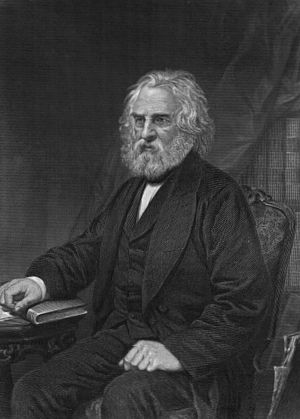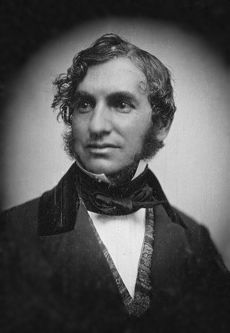Henry Wadsworth Longfellow

American poet Henry Wadsworth Longfellow (1807–1882) was an embodiment of the ascended master Lanello. Longfellow served as a messenger for the Brotherhood in the capacity of poet laureate.
In that embodiment Lanello passed the initiation, not only of recording the teachings of the Brotherhood, but also of recording them in poetry, which is the language of the angels. His poems established within his forcefield and consciousness the patterns of the master El Morya, who dictated through him at that time, the master himself having previously been embodied as the poet Thomas Moore. Longfellow’s poetic rhythm is evident in the decree patterns that have been dictated through Mark.
The poet’s ability to tap the akashic records—not only of his past embodiments but also of events taking place in his time—enabled him to write epic poems that have been loved by millions because of their essential Truth. Concerning “The Golden Legend,” he said, “The story upon which it is founded seems to me to surpass all other legends in beauty and significance. It exhibits, amid the corruption of the Middle Ages, the virtue of disinterestedness and self-sacrifice, and the power of Faith, Hope and Charity, sufficient for all the exigencies of life and death.”
Longfellow referred to Faith, Hope and Charity as proper nouns—perhaps as virtues, but more likely as guardian angels, which, in reality, they are. Lucifer also plays a part in “The Golden Legend.” He was as real a personality to Longfellow as he was to Origen.
Longfellow was able to enter into the spirit of Hiawatha in his poem by that name because he himself had been embodied as that great Indian leader.
In his poem “The Sermon of St. Francis” Longfellow alludes to the saint’s role as a Messenger of God:
- “O brother birds,” St. Francis said,
- “Ye come to me and ask for bread,
- But not with bread alone to-day
- Shall ye be fed and sent away.
- “Ye shall be fed, ye happy birds,
- With manna of celestial words;
- Not mine, though mine they seem to be,
- Not mine, though they be spoken through me.”

In his poem “Rain in Summer” he shows how the gift of spiritual sight common to messengers reveals the round of rebirth as part of the universal wheel of Life:
- Thus the seer,
- With vision clear,
- Sees forms appear and disappear,
- In the perpetual round of strange,
- Mysterious change
- From birth to death, from death to birth;
- From earth to heaven, from heaven to earth;
- Till glimpses more sublime,
- Of things, unseen before,
- Unto his wondering eyes reveal
- The Universe, as an immeasurable wheel
- Turning forever
- In the rapid and rushing river of Time.
Longfellow’s last poem was written in 1882 in honor of another messenger of the Brotherhood, Hermes Trismegistus. In it he alludes to his belief in reembodiment:
- Was he one or many, merging
- Name and fame in one,
- Like a stream, to which, converging,
- Many streamlets run?...
- Who shall call his dreams fallacious?
- Who has searched or sought
- All the unexplored and spacious
- Universe of thought?...
- Trismegistus! Three times greatest!
- How thy name sublime
- Has descended to this latest
- Progeny of time!
Elizabeth Clare Prophet was embodied at that time as Mary Storer Potter, Longfellow’s first wife. She died on November 29, 1835, when they were abroad for his study in Amsterdam.
See also
Sources
Mark L. Prophet and Elizabeth Clare Prophet, The Path to Immortality.
